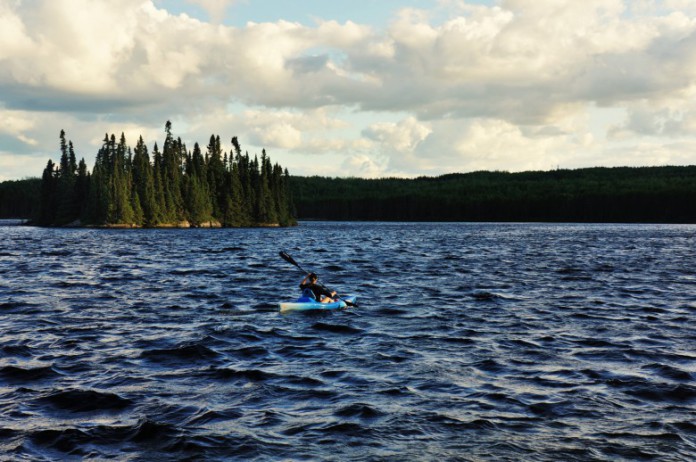ONTARIO—While Ontario Power Generation (OPG) has committed to completing further studies on its proposed deep geological repository (DGR) for low and intermediate level nuclear waste, the president of Northwatch says that while this is a good step, the group would have rather have seen OPG drop their proposal altogether.
“They (OPG) will now do what the minister has told them they have to do,” stated Brennain Lloyd, in an interview with the Recorder this past Sunday. “They had the option of doing this work, or not continuing. They could have dropped their application, which would have been our preferred option.”
“We will just have to see what comes of it,” said Ms. Lloyd. “We are very pleased the minister ordered OPG to do additional work. But basically, what is now in place is that they have another chance to redo their proposal.”
The OPG’s new proposal, “will still be very generic and conceptional for two types of sites, and we’ll have to see the quality and detail of the work they come out with,” said Ms. Lloyd, noting the two typse of sites includes granite sites in Northern Ontario and crystallization of rock versus sedimentary rock in southern Ontario.”
Ms. Lloyd feels that OPG, “got into a tight spot in the hearings. And when they propose the benefits of storing the waste in granite in Northern Ontario their experts basically revealed the weakness of storing nuclear waste in this type of material. Even their expert said storing nuclear waste in granite is harder to predict than in fractured rock.”
OPG Is still looking through a total of 18 possible sites for taking the waste, including Elliot Lake, Blind River, Hornepayne, Whitefish River, Manitouwadge and others, said Ms. Lloyd. “OPG has gone through the study process three times so far, and it still doesn’t address the gaps there are in the proposal. For instance, they say six drill holes in the Bruce Nuclear plan, but they provide no explanation of the different pressure gaps and how much gas was generated-this information is still unknown.”
“It is great the minister has said OPG has to do further studies on at least three components of the report, but this is out of eight gaps in the proposal; we think they should have been required to complete work on all major areas-gaps in the study,” said Ms. Llloyd.
“But yes, we are pleased that they at least have been required to do more work,” continued Ms. Lloyd, “but we are disappointed they are not required to do work on all eight gaps in the proposal. And after bringing forward studies-plans three different times we were hoping the ministry would have said just give it up. They’ve had three goes at it—if this were a baseball game they (OPG) would have struck out and would be sitting on the bench; which is where they should be.”
OPG announced plans last week to complete some further studies on its proposed deep geological repository for low and intermediate level nuclear waste.
After receiving a request in February from federal minister of the environment and climate change Catherine McKenna to conduct three further studies on the DGR, OPG confirmed last Friday that those studies will be completed by the end of 2016, the Owen Sound Times reported.
“OPG maintains that a DGR is the right answer for Ontario’s low and intermediate level waste and that the Bruce site is the right location. An independent federal JRP has recommended moving forward with the project,” it said in a news release from the company. “OPG is confident further studies will confirm this.”
Minister McKenna has requested the additional studies prior to making a decision on the environmental assessment for the site. The studies are: OPG will assess the environmental effectiveness of two “technically and economically feasible” locations in Ontario for a DGR: one in a sedimentary rock formation located in southern Ontario and a second in a granite rock formation located in central to Northern Ontario. Specific locations will not be identified; an updated analysis of the cumulative environmental effects of the project considering the results from preliminary assessments undertaken by the Nuclear Waste Management Organization for used fuel. OPG will further study the cumulative effects assuming a used fuel repository is sited within the DGR study area.
OPG will undertake a review of its mitigation commitments and all integrating actions. Any outdated, additional or redundant commitments previously brought forward to the Joint Review Panel will be identified.
OPG has claimed its plan to store nuclear waste underground near Kincardine is safe and reiterated that again in Friday’s news release. “The DGR would permanently and safely isolate and contain the waste 680 metres underground, ensuring protection of the water and the environment,” the release says.
If built, the DGR would extend underground into rock that’s 450 million years old and hold everything from mop heads, rags and clothing to used reactor components from the Bruce, Darlington and Pickering generation plants.
Construction, which could start as early as 2018, is expected to take seven years. OPG would then need to apply to the Canadian Nuclear Safety Commission for a licence to operate it.
The Saugeen Ojibway Nation has authority to veto the plan. In Friday’s news release from OPG it said the company was “committed to ongoing work with the Saugeen Ojibway Nation.”
“The OPG has also said they will have this work done by December 31, (2016) but we’ll see if this actually happens,” said Ms. Lloyd. “A lot remains to be seen, but the quality of work that has been carried out so far has been low.”





